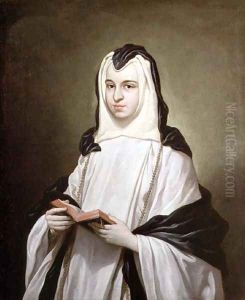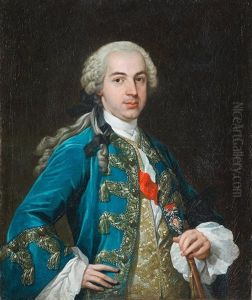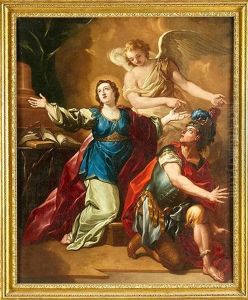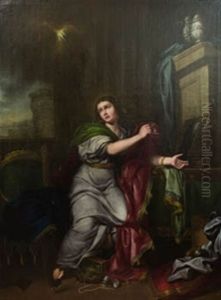Antonio Gonzalez Ruiz Paintings
Antonio González Ruiz was a prominent Spanish painter during the 18th century, known for his work in the Rococo style. Born on September 5, 1711, in Yeste, a small town in the province of Albacete, Spain, he went on to become a significant figure in the Spanish art world of his time. González Ruiz showed an early interest in art and was apprenticed to a local painter before moving to Madrid to further his studies.
In Madrid, he studied under the tutelage of the renowned painter and sculptor Jean Ranc, a French artist who had become the court painter to the Spanish monarchy. Under Ranc’s guidance, González Ruiz honed his skills and began to establish a reputation for himself. He was appointed an academician of merit at the Royal Academy of Fine Arts of San Fernando, where he later served as a director.
González Ruiz's work ranged from religious subjects to portraits, and he became particularly noted for his portraiture. He had the ability to capture the likeness and personality of his sitters, which included many notable figures of his time. His style was characterized by a sophisticated use of light and shade, a delicate handling of colors, and an elegance that was typical of the Rococo period.
In addition to his role as a painter, González Ruiz also held the position of court painter to King Ferdinand VI of Spain. His career flourished under royal patronage, and he produced many important works that contributed to the cultural landscape of Spain during the Enlightenment. Despite being deeply rooted in the Rococo style, some of his later works began to exhibit the early signs of Neoclassicism, reflecting the changing artistic tastes of the period.
Antonio González Ruiz’s legacy is preserved in various museums and collections, including the Prado Museum in Madrid, which houses some of his most significant paintings. He passed away on November 26, 1788, in Madrid, leaving behind a body of work that continues to be celebrated for its artistry and elegance in capturing the spirit of 18th-century Spain.












